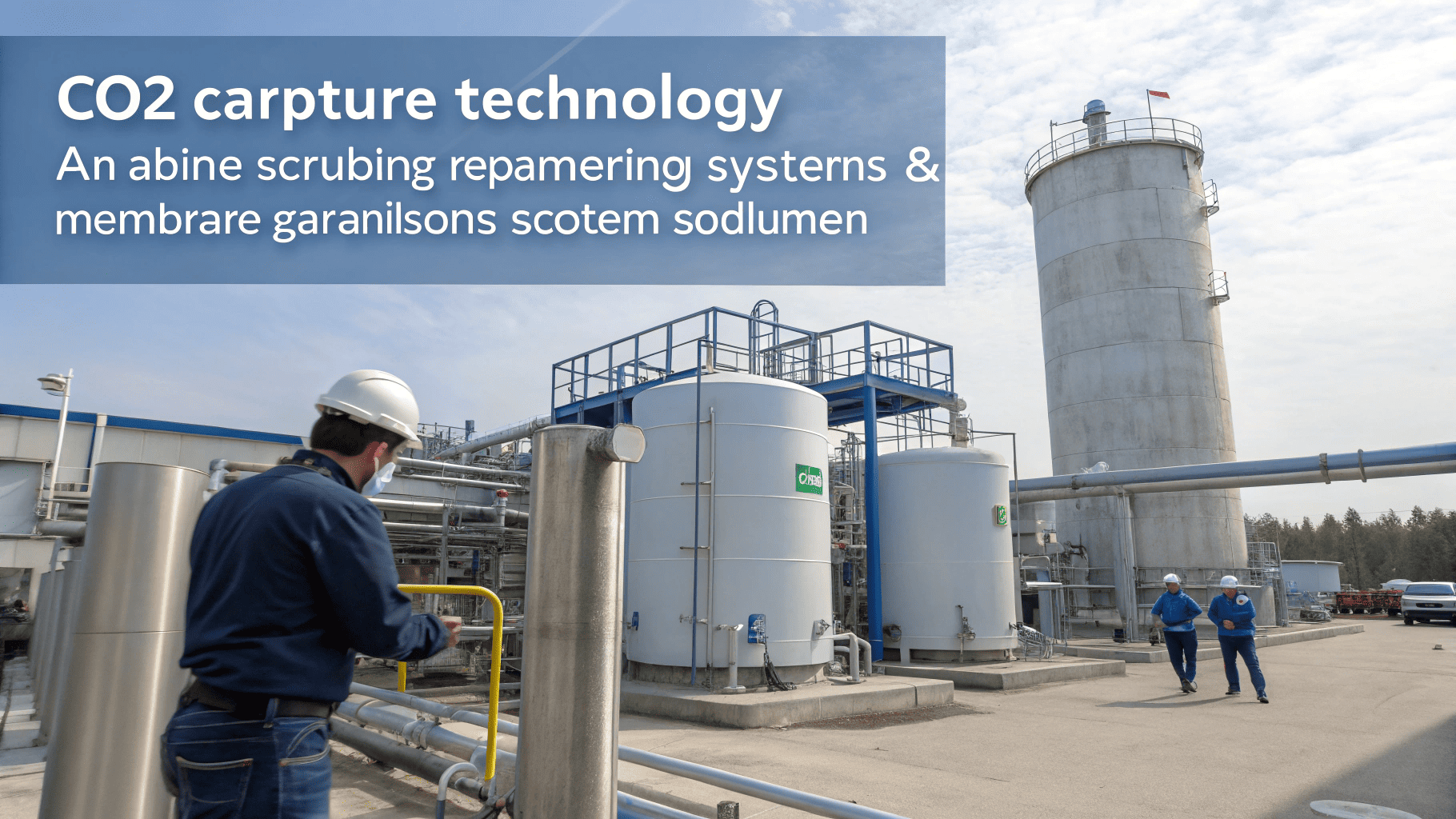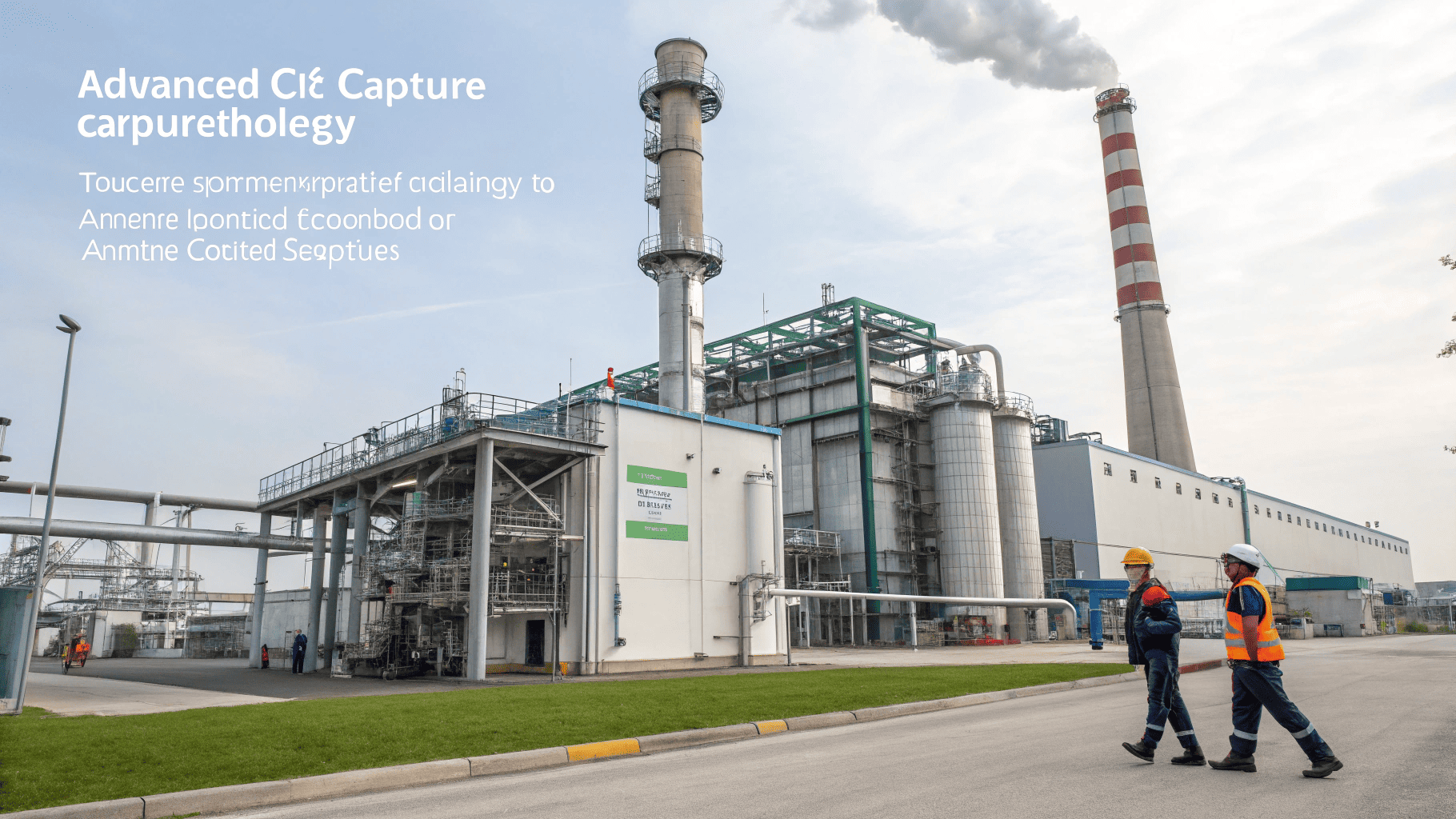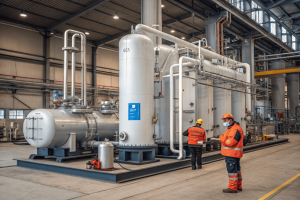Is there a way to capture CO2?
•
Is there a way to capture CO2?
Struggling with high carbon emissions and rising CO2 costs? You're not alone. Many industries face this challenge, looking for a practical solution to turn waste gas into a valuable asset.
Yes, there are several ways to capture CO2. Technologies like amine scrubbing, membrane separation, and cryogenic distillation are widely used. These methods effectively recover CO2 from industrial processes, like in breweries and chemical plants, offering both environmental and economic benefits.

This all sounds promising, but I know what you're thinking. "How does this actually work, and what does it mean for my bottom line?" As an engineer who has spent years in this field, I have seen firsthand how these systems transform operations. Let's break it down further.
How much does a CO2 recovery system cost?
Worried about the high upfront investment for a CO2 system? Budget constraints can be a major hurdle. You need a clear picture of the costs before making a decision.
A CO2 recovery system's cost varies widely, from $50,000 for small-scale units to over $1 million for large industrial plants. Factors like capacity, CO2 purity requirements, technology type, and level of automation significantly influence the final price. Customization for specific needs is also a key factor.

The sticker price is just the beginning. I always tell my fellow engineers to look at the Total Cost of Ownership (TCO). This includes the initial capital expenditure (CAPEX) and the long-term operational expenditure (OPEX). A clear breakdown helps you see the full picture and justify the investment.
Understanding Capital vs. Operational Costs
CAPEX is driven by the system's size, the technology used, and the required purity level. For example, a food-grade system for a brewery will have stricter purification steps than one for industrial use. OPEX includes energy consumption, maintenance, labor, and consumables like solvents or membranes. I've found that mapping these costs out in a simple table makes the decision-making process much clearer. It helps clarify where the money goes and what your long-term commitment looks like.
| Cost Factor | Description | Impact on Price |
|---|---|---|
| Capacity (TPD) | Tons of CO2 recovered per day. | High |
| Purity Level | Food-grade (99.99%) vs. Industrial grade. | High |
| Technology | Amine scrubbing, membrane, cryogenic, etc. | Medium |
| Automation | Fully automated monitoring vs. manual operation. | Medium |
| Installation | Site prep, labor, and integration with existing lines. | Varies |
What is the best material for CO2 capture?
Choosing the wrong capture material can lead to low efficiency and high costs. You need a solution that performs reliably. Finding the right fit for your specific process is critical.
There is no single "best" material; it depends on the application. For industrial flue gases, liquid amine solvents like MEA are common. For smaller-scale or specialized uses, solid adsorbents such as zeolites and metal-organic frameworks (MOFs) show great promise due to their efficiency and reusability.
As engineers, we love finding the optimal solution for a specific problem. The choice of capture material is a classic example of this. You must balance performance, cost, and operational demands. Let’s look at the most common options and their trade-offs.
Liquid Solvents vs. Solid Adsorbents
Liquid solvents, especially amines, are the workhorses of the industry. They are well-understood and effective for large volumes. However, they can be corrosive and require significant energy to regenerate. On the other hand, solid adsorbents are an exciting area of development. Materials like zeolites can be tuned for specific CO2 streams and often require less energy to regenerate. I once worked on a project where we switched from a standard amine to a specialized solid adsorbent. We saw a noticeable drop in our energy costs and reduced maintenance needs.
| Material Type | Common Examples | Pros | Cons |
|---|---|---|---|
| Liquid Solvents | MEA, DEA | High absorption capacity, mature technology | Corrosive, high regeneration energy |
| Solid Adsorbents | Zeolites, MOFs, Carbon | Lower regeneration energy, high selectivity | Can degrade with impurities, higher cost |
Which industries benefit most from CO2 recovery?
You might wonder if this technology is right for your industry. It's a valid concern. Investing in a system that doesn't provide a clear return on investment is a major risk.
Industries that produce a high-purity CO2 byproduct stream benefit the most. This includes breweries, distilleries, chemical plants, and natural gas processing facilities. These sectors can capture and reuse CO2 onsite, cutting costs and creating a new revenue stream from a former waste product.
In my experience, the business case for CO2 recovery is strongest when a facility is both a CO2 producer and a CO2 consumer. This creates a closed-loop system that delivers incredible value. I've helped countless partners in different sectors achieve this.
From Waste Stream to Value Stream
In brewing, fermentation produces a steady stream of very pure CO2. Instead of venting it and then buying CO2 for carbonation, a brewery can capture, purify, and reuse its own gas. This saves money on both ends. Similarly, in the chemical industry, processes like ammonia and hydrogen production create significant CO2. Capturing this CO2 allows it to be sold for use in beverage carbonation, food preservation, or even enhanced oil recovery. The key is identifying an accessible, high-concentration source of CO2 within the existing process. When we find that, we can almost always design a system that pays for itself in just a few years. It transforms an environmental liability into a tangible asset.
Conclusion
Capturing CO2 is a proven and effective strategy. With the right system, you can reduce emissions, lower operating costs, and improve your company's sustainability for years to come.
You may also be interested in:

Why is CO₂ recovery technology gaining popularity worldwide?
Why is CO₂ recovery technology gaining popularity worldwide? You see headlines about carbon capture everywhere. But you wonder if it's
Read more
How is a CO₂ recovery system designed to fit different industries?
How is a CO₂ recovery system designed to fit different industries? You're under pressure to implement a CO₂ recovery solution.
Read more
How energy-efficient are today’s CO₂ recovery technologies?
How energy-efficient are today’s CO₂ recovery technologies? You want to recover CO₂, but you fear that high electricity bills will
Read more